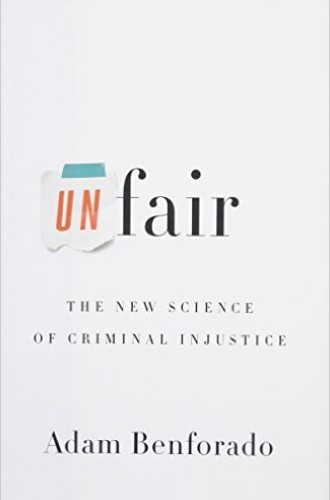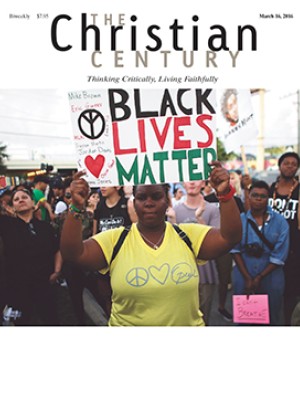The science of injustice
Following the recent cases of police brutality toward black Americans, we all should be worried about unfairness in the criminal justice system. Racism is evident not only in everyday police practices, but also in criminal investigation, prosecutorial discretion, jury verdicts, and sentencing. And the perceived unfairness is not limited to treatment of minorities—hence the joke, “A conservative is a liberal who has been mugged; a liberal is a conservative who has been arrested.” Although judges and lawyers are familiar with the shortcomings of our criminal justice processes, Drexel University law professor Adam Benforado wrote Unfair because “most people don’t know what’s really going on” and need “to confront the hidden unfairness.”
For Benforado, the path back to fairness and justice is not simply to become aware of the things that regularly go wrong in the legal system. He wants us to understand the source of the perennial failures of criminal law and thus why so many reform efforts fail. Unfair does have an encyclopedic aspect to it—in story after story Benforado identifies harms caused by the common mistakes of police, prosecutors, judges, juries, eyewitnesses, expert witnesses, and prison administrators. But the point is more than to reveal these injustices.
Read our latest issue or browse back issues.
Many of us assume that existing procedural safeguards and punishment techniques are fine except for occasional cases of “lying cops, lazy investigators, corrupt judges, biased witnesses, and self-aggrandizing lawyers.” However, Benforado contends that injustice “is built into our legal structures,” and “its origins lie . . . within the mind of each and every one of us.” He is arguing here against the Enlightenment view that we are rational beings in control of our thoughts and beliefs.
Because the Enlightenment view of autonomous human subjects is built into the law, the criminal justice system floats on myths and superstitions—for example, that criminals are generally in control of the choices they make and are thus blameworthy, that well-intentioned attorneys will not engage in dishonest conduct, that judges rise above ideological beliefs, that juries instructed to set aside their biases will do so, and that harsher punishments will reduce crime. The unfairness to which Benforado refers is a constellation of unjustified assumptions and unconscious biases and stereotypes that are magnified by our overconfidence in ourselves and by “cognitive blinders” that cause people to ignore counterevidence.
The book’s subtitle announces that Benforado intends to bring science into the process of reforming criminal justice. He is clearly enamored of recent developments in neuroscience, but he also wants to engage more conventional research into human behavior. His “new science” is therefore a conglomerate of traditional and new psychological and neuroscientific research that is relevant to the field of criminal law and procedure. (Benforado teaches a seminar at Drexel University titled “Law and Mind Sciences,” and he has participated in some of the scientific studies he cites.)
At every turn there is a study supporting Benforado’s argument. This is a strength of the book, but it is also a weakness because Benforado offers no sustained approach, methodology, or disciplinary focus on a particular type of problem. What are the cognitive blinders that we should be worried about? Are they implicit in the racial bias of police or jurors? In our unjustified overconfidence in current crime prevention policies? In our inability to know that we are not in control, that we are not rational beings?
Benforado would reply that we should worry about all of these matters. But they are structurally distinctive—and the latter is quite controversial. Perhaps, in order to make the book more accessible, he has chosen not to engage the complex philosophical debate over free will, neuroscientific and cultural reductionism, and the illusion of human agency.
For example, when discussing prosecutorial misconduct, Benforado tells a lengthy story about a corrupt district attorney’s office in which several prosecutors kept exculpatory evidence from defense counsel. It sounds like a case of bad apples consciously committing transgressions, not like a situation in which unconscious influences act on people with good intentions—the sort of situation that is supposedly the focus of this book. Commenting on these corrupt prosecutors, Benforado cites studies showing that we all cheat and argues that attorneys who do not intend to cheat (and thus are not bad apples) rationalize their cheating and are “extremely good at deceiving themselves.”
Switching gears, Benforado offers another explanation: an advocate in our adversarial system who is called on to be partisan and not objective may not feel responsible for the consequences of lawyerly wrongdoing because the jury or the opposing attorney should act as a corrective. Furthermore, studies show that lawyers’ mental fatigue limits their willpower.
Yet another explanation follows about a culture of dishonesty, in which dishonesty “can spread like a plague.” Then Benforado refers to studies showing that the more one cheats, the more likely one is to believe that others cheat—a “dangerous cascade, especially when lives are at stake.” Benforado’s writing style could itself be characterized as a cascade of explanations of what went wrong in each of his anecdotes. His explanations are based on scientific studies and his experience as a lawyer, but they are presented with little prioritization or anticipation of objections.
Nevertheless, Unfair is an admirable collection of compelling stories about what is wrong with the criminal justice system. It is also comprehensive: in fewer than 400 pages Benforado addresses labeling, false confessions, blame, memory, contradictory expert testimony, activist judges, and the prison system. In explaining each problem, he refers to scientific studies demonstrating that the steps we have taken to solve the problem actually exacerbate it.
Benforado’s recommendations for reform are legion—another cascade—and range from the highly practical to the improbable. The former category includes more security cameras, more police training on implicit bias, and better forensic science. In the latter category, Benforado suggests eliminating partisan experts in favor of neutral ones, eliminating live trials to remove demeanor as a factor, getting rid of blame and retribution in criminal law and replacing it with rehabilitation and resocialization as Norway has done, and even eliminating the adversarial judicial system in favor of European models.
In the end, Benforado appeals to people’s potential for virtue: “We also have to be more compassionate,” to recognize our commonalities and shared goals, to have “empathy for our fellow human beings.”
I agree, but I cannot help but feel that this final rhetorical move was simply necessary for an author seemingly determined to posit all possible solutions to the problems in the criminal justice system, regardless of how realistic they are.
Despite its shortcomings, Unfair is a good starting point for discussions not only about the injustices in criminal law processes and what to do about them, but also about the implications of neuroscience for our understanding of crime and punishment.







